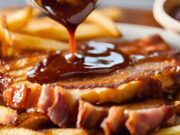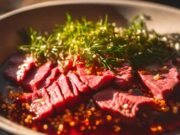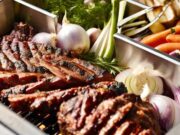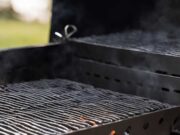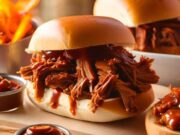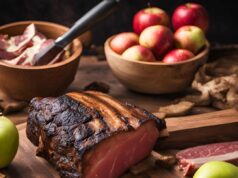- Key Takeaways:
- The Ultimate Guide to BBQ Smoking Times and Temperatures
- Importance of Smoking Times and Temperatures
- Ideal Smoking Temperatures for Different Types of Meat
- Recommended Smoking Times for Meats
- Using a Meat Thermometer for Perfect Results
- Common Mistakes to Avoid When Smoking Meat
- Tips for Enhancing Flavor in Smoked Meats
- Frequently Asked Questions
This comprehensive guide is designed to help you master BBQ smoking. Whether you are an experienced pitmaster or just beginning your journey, understanding smoking times and temperatures is essential for achieving delicious results.
The guide provides detailed information on the ideal smoking temperatures for various types of meat, including beef, pork, and poultry, along with recommended smoking times and tips for enhancing flavor.
You will also discover essential tools, such as meat thermometers, and learn about common pitfalls to avoid. Prepare to elevate your BBQ skills and impress your guests with your newfound expertise.
Key Takeaways:
- Proper smoking times and temperatures are crucial for achieving perfectly smoked and flavorful meats.
- Different types of meat require different smoking temperatures for the best results.
- Using a meat thermometer and avoiding common smoking mistakes can greatly improve the overall outcome of your BBQ smoking experience.
The Ultimate Guide to BBQ Smoking Times and Temperatures
BBQ smoking is an art that necessitates a precise understanding of smoking times and temperatures to yield the most flavorful and juicy smoked meats. Mastering the delicate balance of cooking temperatures, particularly by maintaining your smoker within the ideal range of 225°F to 250°F, is essential for achieving that sought-after smoke ring and tender texture.
Each type of meat, whether it’s pork, chicken, beef, or turkey, requires specific internal temperatures to ensure safety and enhance flavor. Therefore, it is crucial for you to familiarize yourself with the nuances of the smoking process and the importance of proper temperature control.
Importance of Smoking Times and Temperatures
Understanding the importance of smoking times and temperatures is essential for ensuring the quality and safety of your BBQ experience. Each type of meat has its unique cooking requirements, with specific internal temperatures that must be met to prevent foodborne illnesses while preserving flavor and juiciness.
Choosing the right cooking techniques and adhering to time guidelines can significantly enhance the taste and texture of your dishes. For instance, utilizing low and slow cooking methods is particularly effective for tougher cuts, as it allows connective tissues to break down and imparts a rich flavor. To achieve optimal results, it is crucial to monitor internal temperatures diligently.
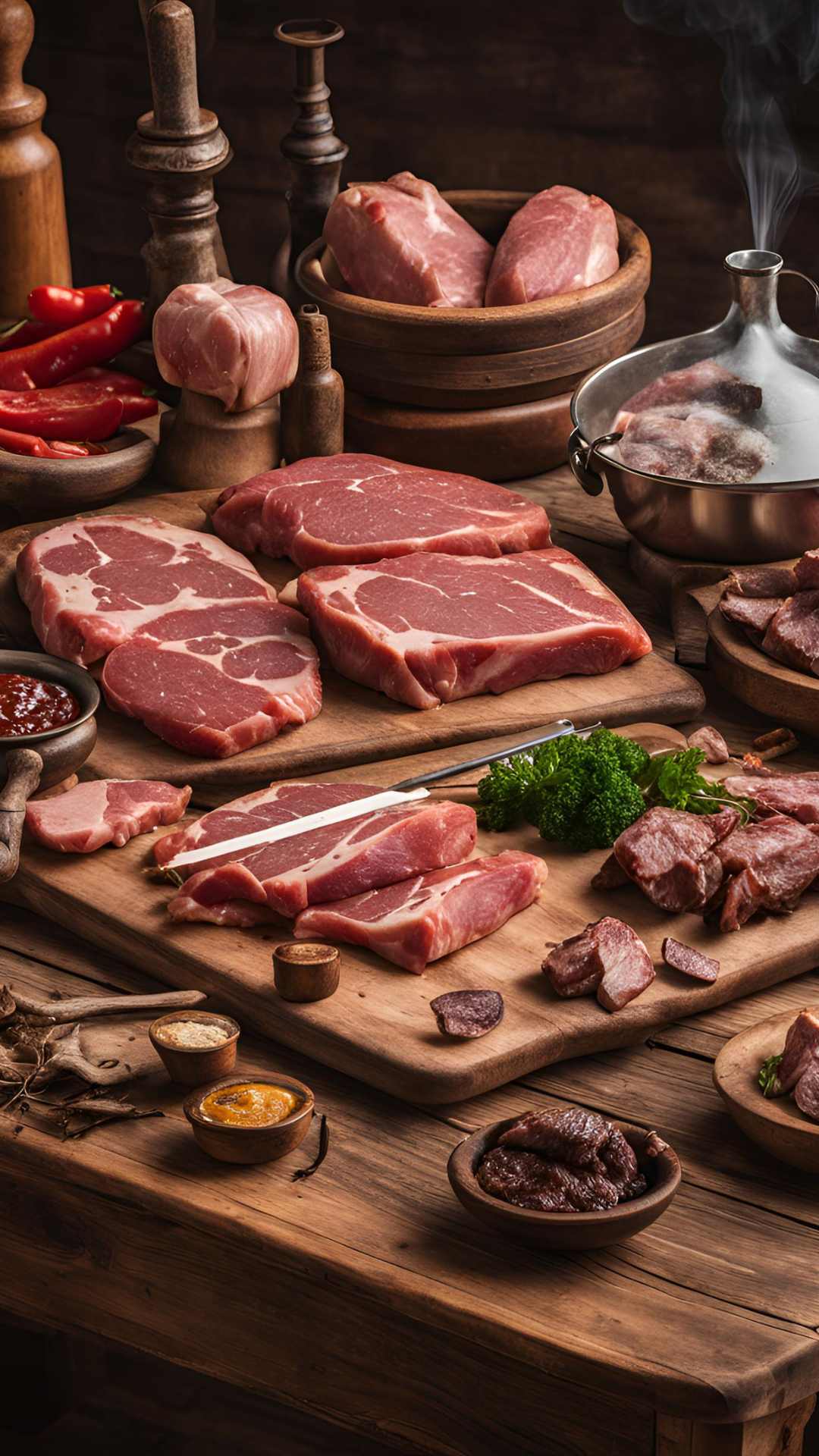
This is where a digital thermometer becomes invaluable; it provides an accurate reading that ensures the meat not only reaches the desired doneness but also meets safety standards. Incorporating such tools into your cooking routine fosters confidence in your BBQ skills, ensuring that every meal is both delicious and safe for everyone to enjoy.
Ideal Smoking Temperatures for Different Types of Meat
Different types of meat require specific smoking temperatures to achieve optimal flavor and texture, making it crucial for BBQ enthusiasts to understand these nuances.
For example, beef is best smoked at a higher temperature range, while poultry and pork necessitate particular internal temperatures to ensure safety and enhance the overall taste of the meat.
Beef, Pork, Poultry, and Lamb
When smoking beef, pork, poultry, and lamb, it is essential to adhere to specific smoking temperatures to achieve optimal results. For instance, pork requires an internal temperature of at least 145°F, while chicken should reach 165°F. Beef temperatures can vary depending on the desired level of doneness, with medium being around 160°F.
When focusing on lamb, it is crucial to aim for a minimum internal temperature of 145°F for medium rare and 160°F for medium. This not only enhances its rich flavors but also ensures safety. Each type of meat plays a unique role in the culinary world, so understanding these benchmarks guarantees both delicious outcomes and promotes food safety.
Utilizing a reliable meat thermometer will help you maintain these temperatures accurately, ensuring every bite is flavorful and safe for consumption. Remember that patience is key in the smoking process; lower temperatures and longer cooking times will deeply infuse the meat with smoky goodness.
Fish and Seafood
Smoking fish and seafood requires your careful attention to temperatures to ensure both safety and optimal flavor. For most varieties, a recommended internal temperature of 145°F is essential. Techniques such as brining and using marinades can enhance your smoking experience, adding depth to the overall flavor profile.
Maintaining optimal temperatures is crucial, as it not only prevents foodborne illnesses but also contributes to achieving the perfect texture and richness in your finished product. If you aim to elevate your smoking game, consider employing a brine solution composed of salt, sugar, and spices. This approach can significantly improve moisture retention while introducing unique flavors.
Utilizing seasoning blends that include herbs, citrus, or even spicy elements can further enhance the taste. When exploring various smoking methods, such as cold smoking or hot smoking, it’s important to understand how these techniques impact the final product. Each approach offers distinct advantages in flavor development and preservation, allowing you to tailor your smoking process to achieve desired results.
Recommended Smoking Times for Meats
Each type of meat has specific recommended smoking times that are critical for achieving optimal flavor and tenderness. It is essential for BBQ practitioners to refer to a smoking chart for guidance.
These times can vary based on the cut of meat, its size, and the cooking method employed during the smoking process.
How Long to Smoke Each Type of Meat
The smoking times for meats can vary significantly based on the type and cut, with each requiring specific cooking durations to achieve their optimal flavor and tenderness. For instance, a pork butt may take anywhere from 8 to 12 hours, while smoked chicken can be ready in approximately 3 to 4 hours.
Understanding the appropriate smoking times is essential for attaining delicious results. Brisket typically demands a longer commitment, requiring about 12 to 18 hours to become a tender, flavorful delight. In contrast, a rack of ribs can usually be smoked within 5 to 6 hours to ensure optimal fall-off-the-bone perfection.
The choice of wood can also impact cooking times and flavor profiles, making it critical to monitor both the internal temperature and smoking duration closely. This attention to detail not only enhances the taste but also improves the overall experience of enjoying smoked meats.
Using a Meat Thermometer for Perfect Results
Using a meat thermometer, especially a digital one, is essential for achieving perfect results in BBQ smoking. It enables accurate temperature monitoring throughout the smoking process, ensuring that meats reach their required internal temperatures, which enhances both safety and flavor.
By regularly checking the internal temperature of the meat, you can avoid the pitfalls of overcooking or undercooking, both of which can lead to unappetizing results. Cooking times can vary based on the type of meat and its thickness, making precise temperature readings crucial. A meat thermometer allows you to understand the nuances of different cuts, guiding you toward that coveted smoky tenderness.
Knowing when to wrap or spritz can significantly influence the outcome of your BBQ, and having real-time data at your fingertips promotes confidence throughout the smoking journey.
Common Mistakes to Avoid When Smoking Meat
There are several common mistakes that can hinder your BBQ smoking experience, particularly those related to temperature control and timing, which are critical to the meat preparation process. Failing to monitor internal temperatures accurately or misjudging cooking times can result in dry or unsafe meats.
Many individuals often overlook the importance of allowing the meat to rest before slicing. This step is crucial as it enables the juices to redistribute, thereby enhancing both flavor and tenderness.
Ignoring the necessity of maintaining a proper temperature range can lead to undercooked or overcooked meat, both of which detract from the overall enjoyment of the meal.
Additionally, inadequate seasoning or the incorrect choice of wood can significantly affect the flavor profile, ultimately leading to disappointment when serving.
By paying attention to these details, you can ensure a more successful and enjoyable BBQ smoking experience.
Tips for Enhancing Flavor in Smoked Meats
Enhancing the flavor of smoked meats can be effectively achieved through various techniques, including the use of marinades, seasonings, and specific wood types during the smoking process. By implementing these strategies, you can create more complex flavor profiles that elevate your BBQ experience.
To begin, consider marinating the meat in a blend of acids, such as vinegar or citrus juices, combined with herbs and spices. This approach helps to tenderize the meat while infusing it with deep flavors. A dry rub can also be highly beneficial; a combination of salt, sugar, paprika, and garlic powder can create a crust that enhances flavor and adds a pleasing texture.
When selecting wood types for smoking, fruity options like apple or cherry can impart a subtle sweetness, while stronger woods such as hickory or mesquite contribute a bold, smoky profile. Experimenting with these components can lead to mouthwatering results that will impress any BBQ enthusiast.
Frequently Asked Questions
What is BBQ smoking and why is it important?
BBQ smoking is a cooking technique that involves using smoke from wood or charcoal to flavor and cook food. It is important because it adds a unique and delicious smoky flavor to the food, making it perfect for BBQ dishes.
What are the different types of BBQ smoking methods?
There are several different types of BBQ smoking methods, including hot smoking, cold smoking, and smoke-roasting. Each method uses a different temperature and smoking time to achieve different results.
How do I know the ideal smoking times and temperatures for different types of meats?
The ideal smoking times and temperatures vary depending on the type of meat you are cooking. Generally, tougher cuts of meat, such as beef brisket, require longer smoking times at lower temperatures, while leaner cuts of meat, such as chicken, require shorter smoking times at higher temperatures.
What is the best type of wood to use for BBQ smoking?
The best type of wood to use for BBQ smoking depends on personal preference and the type of meat being cooked. Some popular options include hickory, applewood, mesquite, and oak.
How can I ensure that my BBQ smoked meat is safe to eat?
To ensure that your BBQ smoked meat is safe to eat, it is important to always use a meat thermometer to check the internal temperature. The USDA recommends cooking meat to a minimum internal temperature of 145°F for beef, pork, and veal, and 165°F for poultry.
Are there any tips for achieving the perfect BBQ smoked meat?
Some tips for achieving the perfect BBQ smoked meat include using a good quality smoker or grill, properly seasoning the meat, and maintaining a consistent temperature throughout the cooking process. It is also important to use a meat thermometer to avoid overcooking or undercooking the meat.








